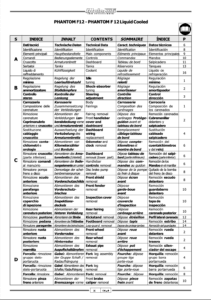Complete PDF version of the Service Manual for the Malaguti F12 Phantom. A MUST for every F12 owner.
Download: Immediately after payment!
OEM Original factory workshop manual.
Models covered by this manual: 1993 to 2011
Number of pages: 282 pages
Table of contents:


This PDF repair manual can be downloaded right after the payment process in complete, on the device of your choice.
We do not offer printed manuals, for the following reasons:
- it is more eco-friendly to use a digital version
- your manual never gets dirty or greasy
- you can always choose to print the specific page(s) you need to work on your bike
- you receive your manual immediately after payment
- it is searchable
Malaguti F12 Phantom
Malaguti is an Italian bicycle, scooter, and motorbike manufacturer located in San Lazzaro di Savena that was founded in 1930 by Antonino Malaguti. After producing bicycles until 1958, they transitioned into the motorbike industry. They are notable for the usage of tiny engines in their motorcycles. Malaguti lay off its last workers in Bologna, Italy, in October 2011, when the firm filed for bankruptcy. The company was bought out by the Austrian enterprise KSR Group GmbH in 2018.
Born in 1930 in Bologna as a bicycle resale and repair business courtesy to Antonino Malaguti, a twenty-two year old who had been a promising young rider in his mid-twenties, Malaguti quickly became a producer of cycles with an appreciated production, albeit restricted to the Bologna region.
After escaping the bombings of WWII, the company immediately resumed production, and in 1949, in response to the enormous demand for post-war means of locomotion, it began to build an economical two-engine with a central beam frame of clear cycling derivation, equipped with traction. roller with Mosquito motor. In a gradual and steady progression, the same chassis was outfitted with front and rear suspensions, drum brakes, a huge tank, and a 49 cm3 two-stroke engine from the German Espress Werke, culminating in the 1957 release of the “Express” and “Express Sport” mopeds.
Until the first half of the 1960s, Malaguti manufacturing was oriented solely at economic mopeds designed for the movement of items and people, but the economic growth and mass motorization drove the building of mopeds for fourteen-year-old recreational usage. After signing a supply deal with Motori Franco Morini, the 50 Gransport sports moped was introduced in 1963, and it was a big success, especially in France, where it was sold under the name 50 Olympique. The 50 Roncobilaccio, one of the first Italian off-road mopeds, joined the renovated version of the 50 Gransport in the second part of the 1960s, complete with a remarkable twin bilateral exhaust pipe.
Other models with excellent commercial success appeared in the following decades, such as the Fifty of 1974, one of the most successful mopeds, followed by the Malaguti Track, Drop, and Dribbling, and in 1985, the Malaguti Runner 125, an enduro motorbike.
F12 Phantom
Paioli shocks, Grimeca brakes, alloy wheels, and Pirelli/Maxxis tires are included. One of Malaguti’s most well-known scooters. There were two model families to choose from. The first one, which was built from the 1990s onwards, had a 50 cc two-stroke engine and was subsequently joined for a short time by a 100 cc two-stroke engine variant on the same chassis (some models were air-cooled, some liquid-cooled). The second family was the Phantom Max (made in the 2000s), which had very comparable external looks but was really a redesign with a larger frame (and total size) and larger four-stroke, four valve, one cylinder liquid-cooled engines built by Piaggio (125, 200, and 250 cc).
Source: Wikipedia


